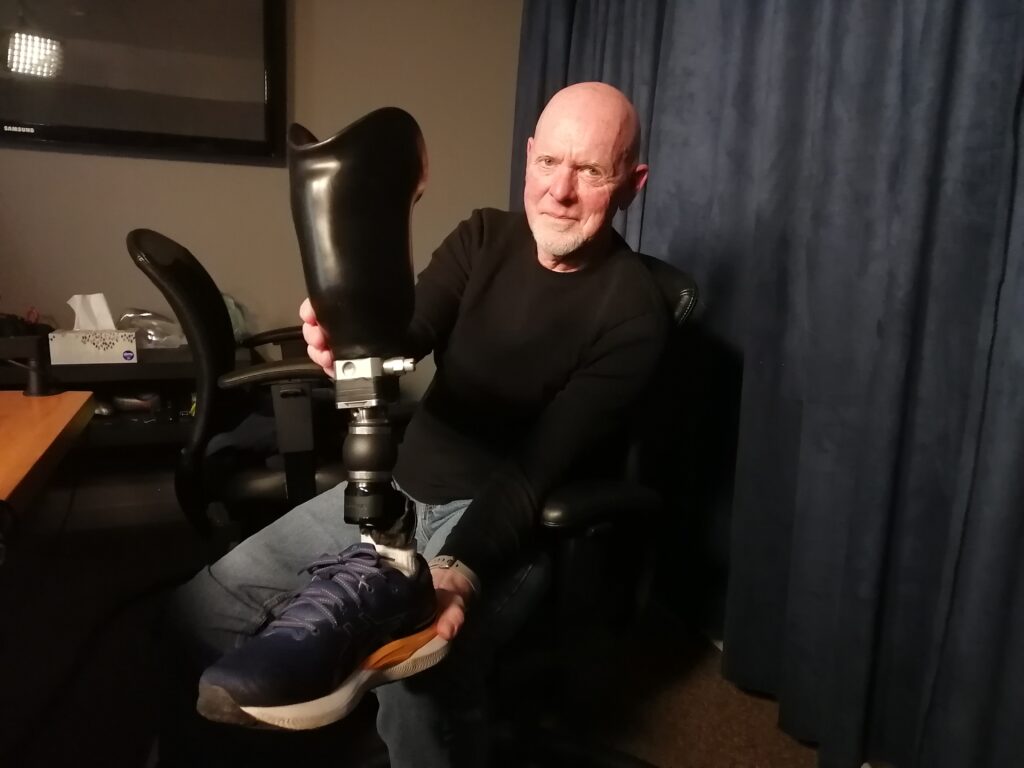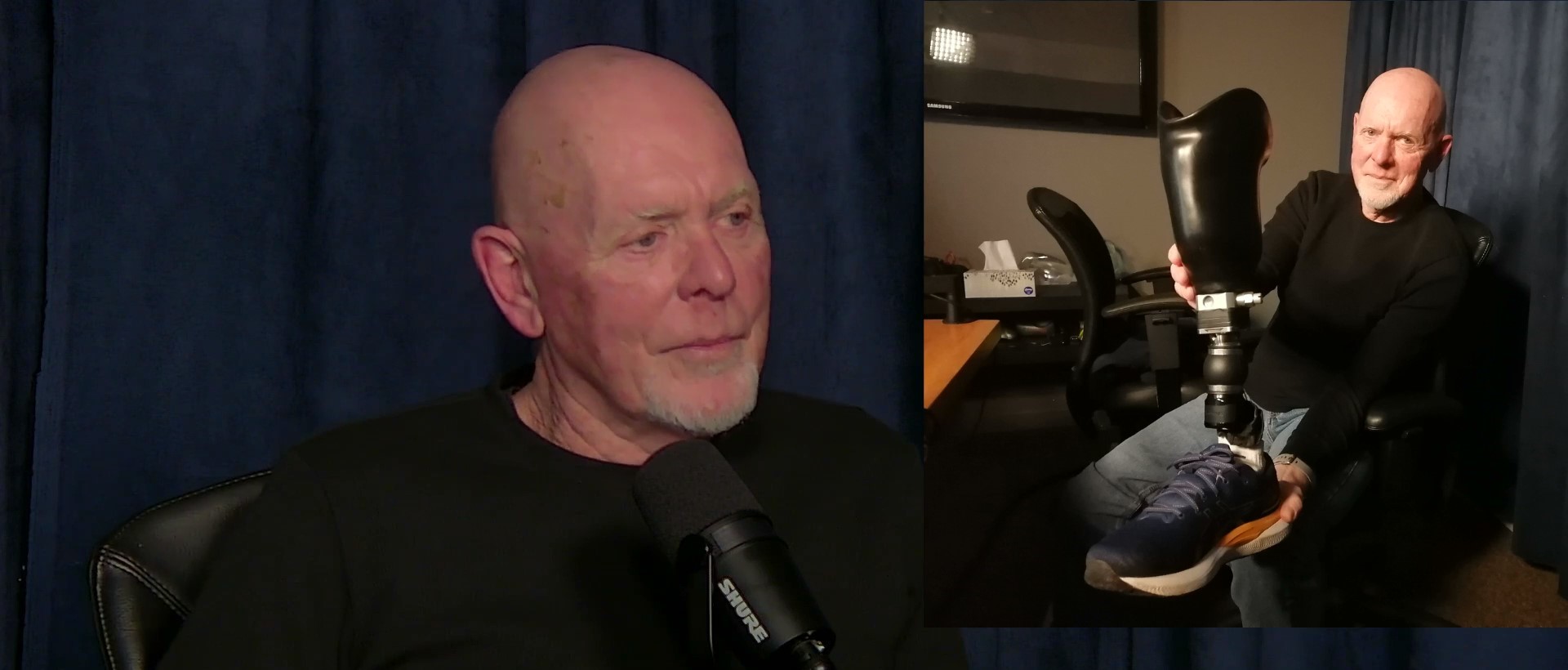Wayne Eyre, 71, considers himself lucky after falling off a roof two years ago.
The retired paramedic broke his lower leg in five places and a nasty infection led to a below-knee amputation seven months later. But the head athletic trainer for the Nipissing Lakers hockey teams knows it could have been much worse, with accidents like his often leading to spinal injuries or death.


And while he may have lost his right foot he kept his fighting spirit, making his speedy adaptation to a prosthetic an inspiring story worth sharing.
Only weeks away from the two-year anniversary of the April 19, 2021 fall, Canadore College’s Occupational Therapy and Physiotherapist assistant programs invited him back for a second presentation for students and he’s even preparing to soon walk up the stairs of CN Tower.
“I consider myself extremely lucky to have come through this journey as well as I have and would be more than happy to help anyone else that is faced with the same experience or struggling to get through it.”
Small Town Times sat down with Eyre on Thursday, April 6 to talk about that fateful day, the emotional roller coaster of trying to save his ankle and foot and the many challenges such a life-changing event creates. The hour-long conversation included his first-hand account of ‘phantom pain’ and the importance of setting goals with a positive attitude to make physiotherapy gains. Also discussed is how important support networks become, as well as how physical fitness before such an injury plays a role in recovery.
“It takes you the same length of time to get through it whether you’re happy or sad,” Eyre said about how attitude makes a difference when facing adversity. “That’s the way I looked at it … you know, if I’m grumbling about it and feeling sorry for myself I’m just wasting my time, right?”
From Wayne Eyre’s journal notes:
“Phantom pain!! I don’t think anyone can understand just how painful this is. I didn’t take much in the way of pain killers for my first 2 surgeries because I didn’t feel the pain was that bad or that it wasn’t something I could manage. This was so different from that. This was a totally different level of pain which to be honest I definitely hadn’t expected. I would have cramps in my foot and lower leg, that I didn’t have anymore, so intense it would make you tense up your whole body. I actually reached down to massage my foot the first time it cramped which seemed a little stupid seeing as it wasn’t there. But it feels so real that you honestly believe it is. It happened often during the day. I was taking two 4mg morphine pills and two 500mg acetaminophen pills at the same time and it didn’t touch the pain. I had this pain often during the day and it would wake me up during the night. I had never experienced anything like this before. I tried the mirror method which involved having a mirror along side my other leg so I could fool my brain into thinking my leg and foot were still there. Unfortunately it didn’t work very well for me so I quit doing it. The brain is such a powerful thing. It still sends signals to your nerves in the foot and lower leg, it doesn’t understand they aren’t there anymore. You have disrupted the cycle and it takes a long time for this to change. Some say 2 months others say 2 years. I was definitely hoping for 2 months. I wasn’t sure I could stand this for 2 years.”
About sharing his experience with students:
“I know from all the courses I took as a paramedic over the years that learning from a book is good but it can’t compare with seeing it in real life. For me this was a great experience and I was happy with the way it went. They made it very comfortable and the students seemed to be interested in what I had to say. I told my journey over the year since the accident happened. I took my leg off and passed it around so they could see how it worked as well as how heavy it was. I also took the liner off and demonstrated how to put it on and how to manage the socks that take up the space between your liner and prosthetic. I also talked about the mental and emotional side of this journey. We talked about the struggles you have dealing with the decision to have the amputation as well as after when you have to decide to what level you want your life back and just how willing you are to do what is necessary to get there. They will deal with patients who have a much worse experience then me and I asked them to be patient and show empathy towards them. It might not look like they are trying to move on to you but from their side they probably feel that they are doing their best. Everyone’s best is different. The mental and emotional side of this is at least 75 to 80 percent of getting back to being yourself. If you can’t get through that then the physical side will never improve.”




Writer, photographer and proud father. My mom’s family is from the Soo with its Algoma Highlands, dad hailed from Cobden in the Ottawa Valley and I spent my teen years in Capreol. Summers were at the beach on the Vermillion River and winters at ‘The Rink.’ Born in East York but Toronto never was my thing. Ever since a kid looking out the window on long trips, I imagined living on the highway in a little house with a big yard and trees growing all around me.







